intermediate
Ethereum, or ETH, is undoubtedly one of the most lucrative assets one can get their hands on. As the second-biggest cryptocurrency, it certainly has a lot of value and is relatively future-proof, especially compared to many other digital assets. Its ever-increasing price, coupled with the incredible usability of this coin, has attracted many investors to Ethereum — and many miners.
Ethereum mining is one of the best ways to profit from ETH. While you still have to look for an opportune moment to sell your coins, you don’t have to stress as much over opportunities to buy them. Mining is done consistently over long periods of time, so your income of ether will be fairly consistent and non-reliant on the coin’s price movements.
Some people see mining as an easy way to become rich, while others think it is a waste of resources now that so many people are doing it. In fact, neither of these statements is true: while mining helps you make a profit and can be seen as a source of passive income, it requires quite a bit of investment, both in terms of money and time. However, it can still be profitable.
While there’s a lot to learn about mining, perhaps the most crucial part of it concerns equipment — both hardware and software. Today, we will talk about the best Ethereum mining equipment that you can use to get some ether.
Why Should You Be Mining ETH?
Most people mine Ethereum (or any other cryptocurrency, really) to make money. Despite being in decline lately, mining can still be quite profitable. As long as you keep your expectations realistic and choose the best Ethereum mining hardware and software for your particular situation, making a profit can still be possible.
Some people, of course, also mine crypto to simply get it and don’t have any desire to sell it (at least, not in the near future). This is especially applicable to big cryptocurrencies like Bitcoin or Ethereum, which are relatively reliable and have plenty of use cases apart from just being a speculative asset.
However, you may ask, if one wants profits, why not mine one of the smaller coins, which don’t require as many resources but can explode at any moment? And if one does decide to mine a top-20 cryptocurrency, why Ethereum?
When it comes to the first question, the answer is quite simple: it depends on your aversion to risk. Most people would not be OK with investing both time and money in an asset that may or may not ever have any significant value. Of course, if you truly believe that a smaller cryptocurrency has a chance to become the next big thing, you can invest in it, but it is still good to have and mine bigger cryptocurrencies if only to diversify your portfolio. If you invest in some smaller coins, you can check out our list of cryptocurrencies that we think can explode in 2022.
Speaking of, why mine Ethereum and not Bitcoin or, for example, DOGE? This question is a bit hard to answer, especially since ETH mining may soon cease to exist. Ethereum’s team has been very open about its plans to switch from the proof-of-work consensus algorithm to the proof-of-stake one, which will make Ethereum unminable. However, the date of the transition has not been settled yet, and ETH still remains a great investment — especially since it can be efficiently mined with GPUs, which many people already have.
So, is it still worth it to invest in Ethereum mining when its future is so uncertain? Well, as always, it depends. Some experts believe that ETH mining can still be quite profitable, and, at the end of the day, the hardware and the mining rig used for it can still be either resold or used for mining other cryptocurrencies (or everyday stuff like playing video games) once the switch happens.
How Does Ethereum Mining Work?
Mining is essentially the process of creating new blocks on the blockchain by solving complex cryptographic puzzles. These blocks hold transactional data. Miners use their computing power and time to produce blocks and process transactions, and they are rewarded for that with a certain amount of the cryptocurrency they are mining. The proof-of-work (PoW) algorithm that Ethereum uses is called the Ethash.
Ethereum mining was designed in a way that only makes it profitable when it is executed with graphics cards, GPUs — so, unlike Bitcoin, it cannot be mined with ASICs.
If you choose to mine Ethereum solo, you will need to get some mining software and hardware. Alternatively, you can partake in cloud mining — the process of paying somebody else to mine for you. A cloud mining service allows you to rent another person’s computing power.
You can also join an Ethereum mining pool — it requires less investment and is generally easier. There are a lot of different Ethereum mining pools out there, and finding one that suits you can prove to be quite hard. Check out our list of the best Ethereum mining pools to get started.
Is Ethereum Profitable to Mine?
One of the defining characteristics of any cryptocurrency when it comes to mining is “difficulty.” It increases as time goes by and as the demand for the coin rises, making it harder for latecomers to make a profit.
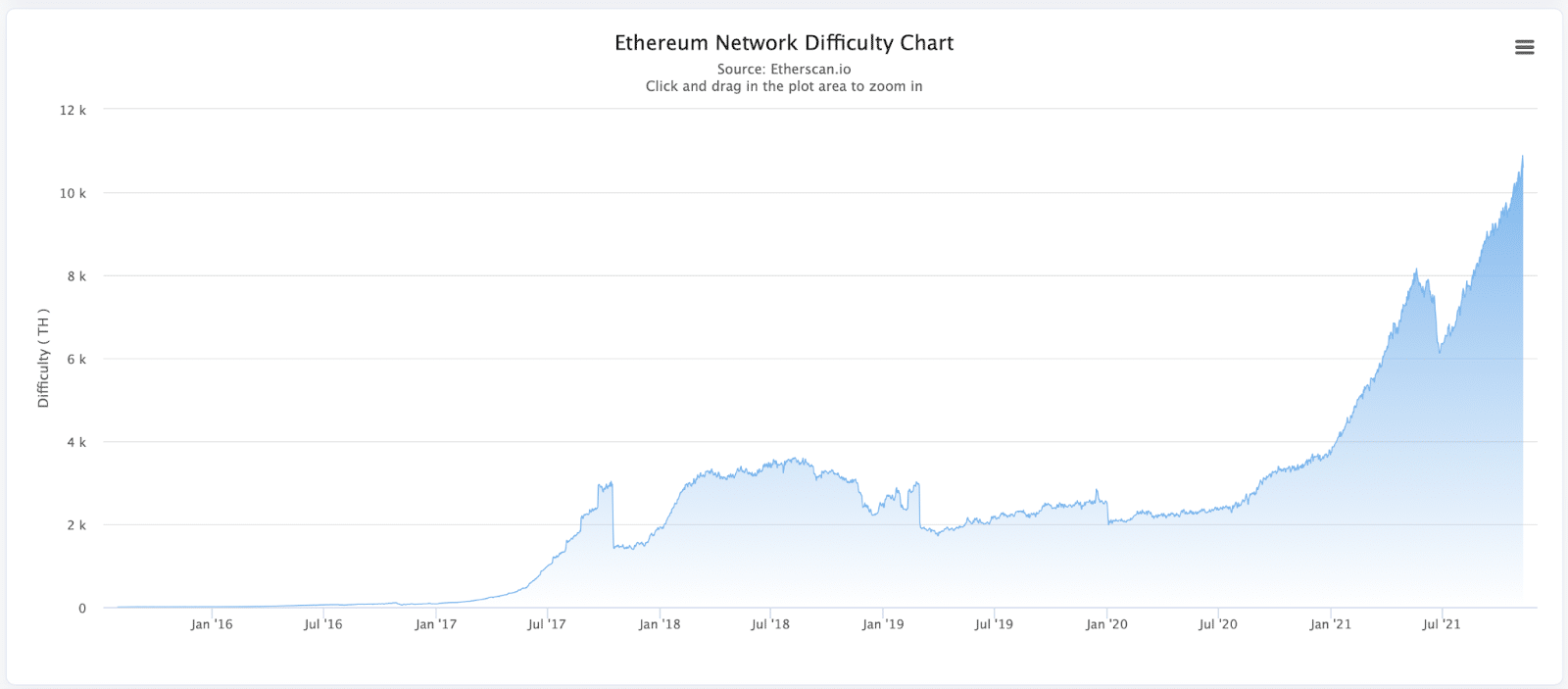
As you can see from the chart, ETH’s mining difficulty has always been steadily rising with time, but it also spiked up when the hype for Ethereum was high, like during the first altseason or at the beginning of 2021.
The higher the difficulty level, the more resources one will need to expend in order to make a profit. However, mining difficulty almost always goes hand-in-hand with the asset’s price, ensuring miners will still be enticed to spend their computing power on that particular cryptocurrency.
As a result, while ETH mining now requires more resources than ever, it is still incredibly lucrative; after all, the Ethereum price has been steadily rising lately, experiencing only minor corrections before going back to the green again.
You should note, however, that the profitability of Ethereum mining will largely depend on how you mine it and what you are willing to pay in terms of both the initial investment and the upkeep.
Additionally, there are some tricks you can use to increase your hash rate and thus profit without increasing the costs of mining — we will talk about some of them later on in the article.
The official Ethereum network website discourages people from picking up mining, saying that because of the switch, you won’t have enough time to not only make a profit but also simply break even. However, the transition to the proof-of-stake consensus algorithm has already been pushed back a few times, and there’s no way to know when it actually happens.
That said, the risk is still there: if Ethereum is the only coin you could see yourself mining, and if you have zero previous mining experiences, or if you do not know how to utilize your hardware after mining, then we indeed do not recommend you to pick ETH mining up at this point. There are better ways for you to invest your money.
What Do Ethereum Mining Rewards Look Like?
The current Ethereum mining reward is 2 ETH, plus all the transaction and gas fees contained in the block that was mined. BitInfoCharts has calculated that the current average profitability of Ethereum mining is 0.09 USD per day for every 1 MH/s.
Software Requirements for ETH Mining
In order to make a profit from mining Ethereum, you will need to satisfy a few software requirements first.
Requirement #1: An Ethereum Wallet
Firstly, you will need to get a good and reliable crypto wallet that supports Ethereum. If you want to go for a hardware one, Ledger or Trezor would be a great choice. If you don’t plan on hodling your ETH, hot wallets like MyEtherWallet or Enjin may be a better pick. Read more about Ethereum wallets here.
Requirement #2: Installing Geth
Geth — Go Ethereum — is a command-line interface for running the ETH node implemented in the Go programming language. Geth, among other things, is what allows one to mine ether.
You can download Geth directly from its website — the same page also features comprehensive installation and utilization guides.
Please note that since this is a command-line interface, installing and using it can be quite complicated. But don’t worry — the instructions provided on the website we linked above will make getting started with Geth easy even for people with no experience in programming.
Requirement #3: Installing Any Ethereum Mining Software
Once that’s done, you will need to install an Ethereum mining software.
The Best Software For Mining Ethereum
Mining software helps to control the mining process. There are many different types of Ethereum mining software — some only support ETH, while others are more diverse and offer a wider range of supported cryptocurrencies. Many also have specific hardware requirements, only working with either NVIDIA or AMD GPUs. We recommend going for programs that receive frequent software updates — they are typically a lot more secure.
Before installing any of the Ethereum mining software on this list, don’t forget to check whether your device meets its system requirements. We also recommend searching them up on reddit or other crypto forums to see what other users consider to be the best Ethereum mining software.
NBMiner
This Ethereum mining software was designed by Chinese developers for Chinese miners, but it can also be used by miners from other countries. It supports Windows and Linux, as well as both AMD and NVIDIA GPUs. It can establish an SSL connection to mining pools.
This software can be used for mining quite a few cryptocurrencies: ETH, AE, RVN, BEAM, CFX, and ERGO. The dev fee for Ethereum in particular is only 1%.
NBMiner can be rather complicated to use, but the developers provided a very detailed how-to guide on this program on its GitHub page.
PhoenixMiner
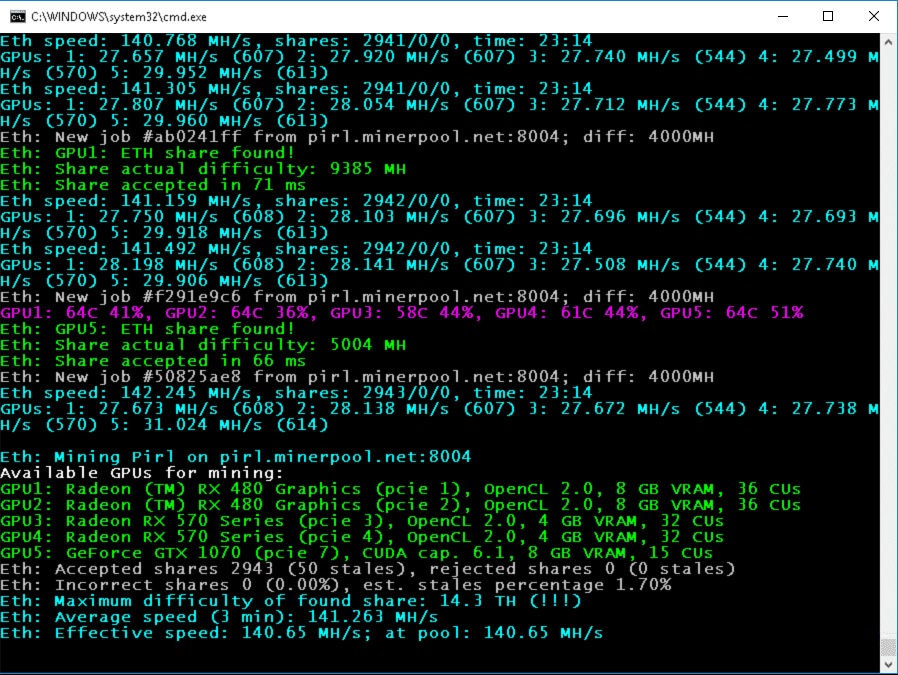
While PhoenixMiner does not have the dual mining option, it can offer its users lower dev fees and a high level of stability. This Ethereum mining software supports both AMD and NVIDIA cards and can be run on either Windows or Linux machines. The PhoenixMiner Ethereum GPU miner software perfectly suits Windows 10.
You can use PhoenixMiner to mine other coins based on the ethash algorithm (Ethereum Classic, MOAC, etc.) The dev fee is 0.65%.
TeamRedMiner
TeamRedMiner is an optimized Ethereum mining software for AMD GPUs that supports both Windows and Linux operating systems. The miner works great with Radeon RX Vega series graphics cards. This mining software developers’ fee for mining ethash with a 4GB Polaris is 0.75%. If you use other GPUs when mining the ethash algorithm with TeamRedMiner, the dev fee will rise up to 1%.
CudoMiner
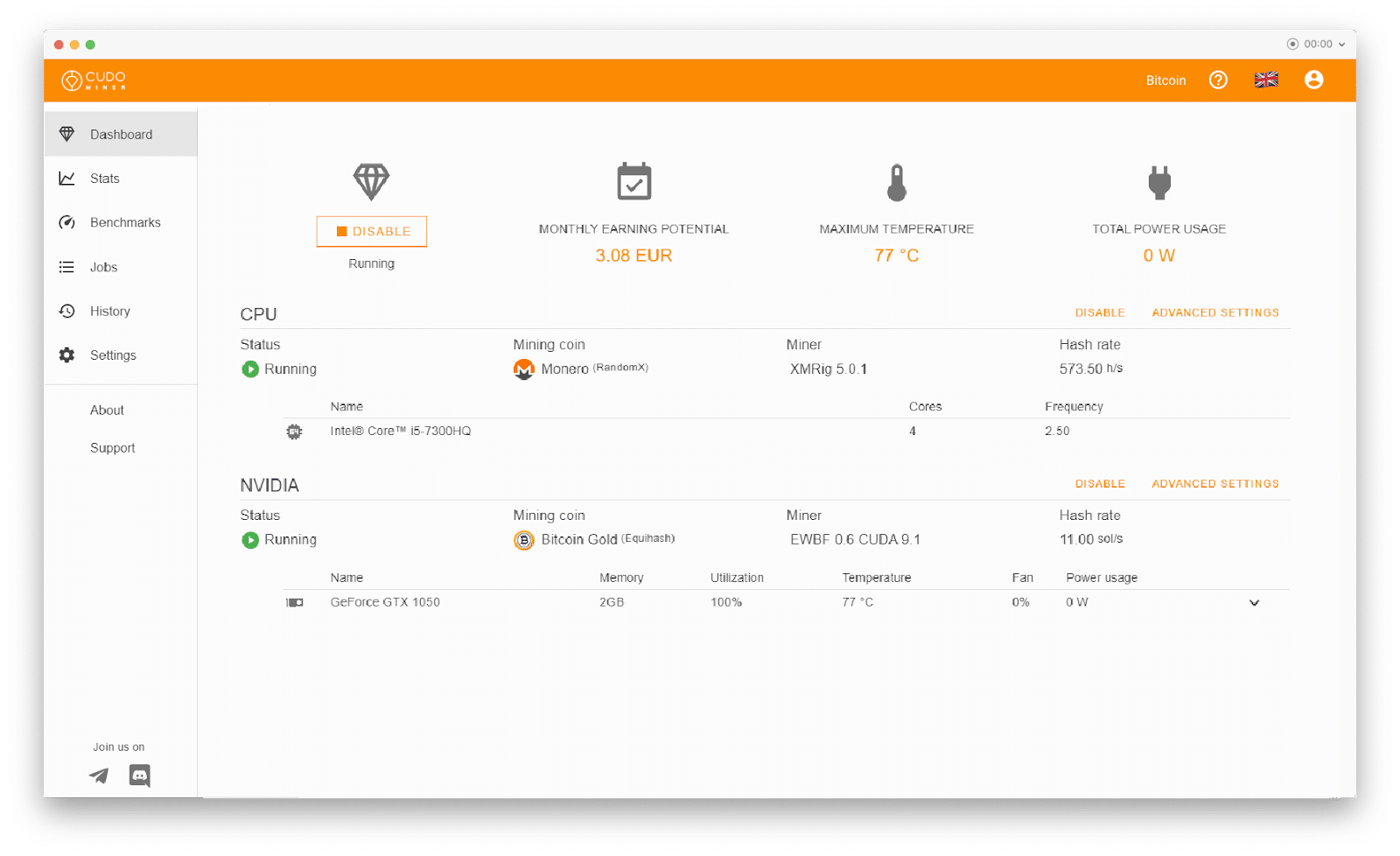
This Ethereum mining software has one of the best user interfaces on the market. It is pleasant to the eye, and it is also easy to use. It can auto-switch your settings to help you get maximum profit and can even help you set up things like overclocking. In addition, CudoMiner’s website is also extremely user-friendly and offers a lot of beginner guides to mining.
This Ethereum mining software supports a variety of cryptocurrencies, as well as both NVIDIA and AMD graphics cards. Additionally, it works on both Windows and Linux systems. They don’t have a fixed dev fee but say it should be about 3% for mining rig owners.
GMiner
GMiner is an Ethereum mining software that was created by a group of Russian developers. Its first version was released back in September 2018.
This ETH miner is well-loved by users and supports both NVIDIA and AMD graphics cards. It works with the most popular mining algorithms, such as Ethash, ProgPoW, KAWPOW, Equihash, and more.
One of the defining features of GMiner is that it charges its commission continuously instead of interval charges like most other Ethereum miners do. This increases the potential profit users can receive. Its dev fee is 0.65%.
LolMiner
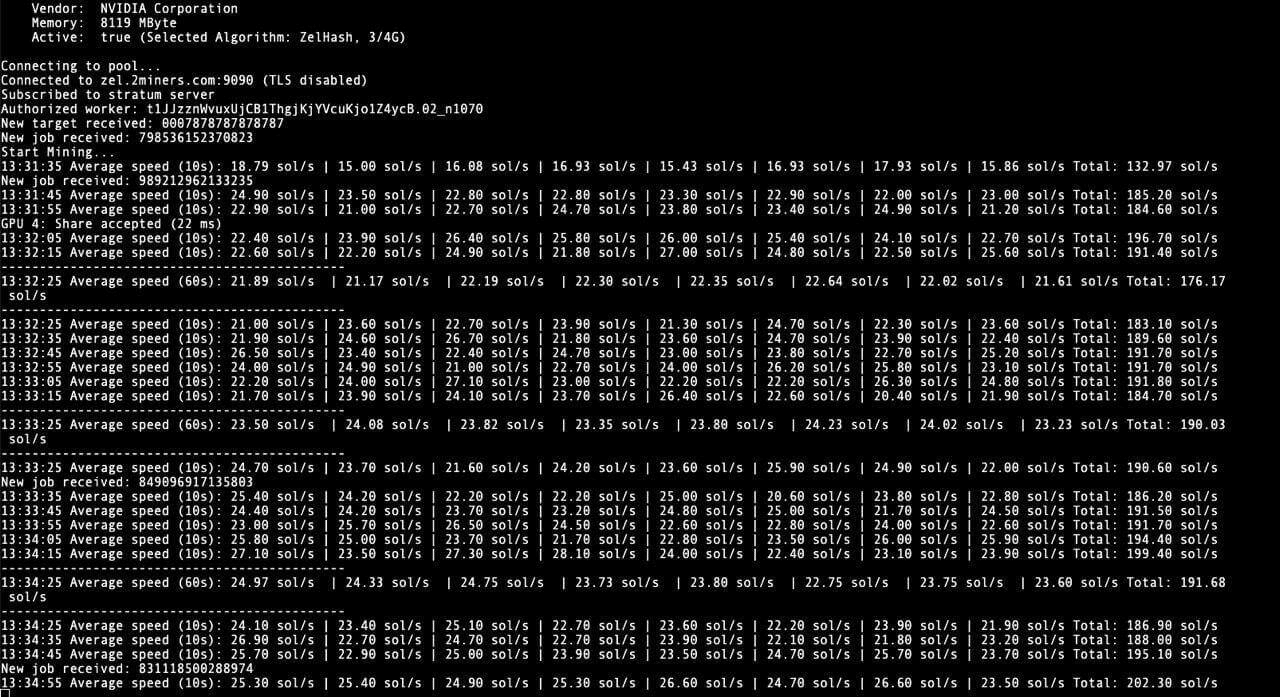
Lolminer was initially made for Equihash and Cuckatoo algorithms. Later, the developers started supporting more coins, allowing users to mine coins on the ethash algorithm. This Ethereum mining software is primarily produced for AMD graphics cards. Even though the program supports the majority of the NVIDIA graphics cards, stability and work speed are not guaranteed. The dev fee is 1%.
T-Rex Miner
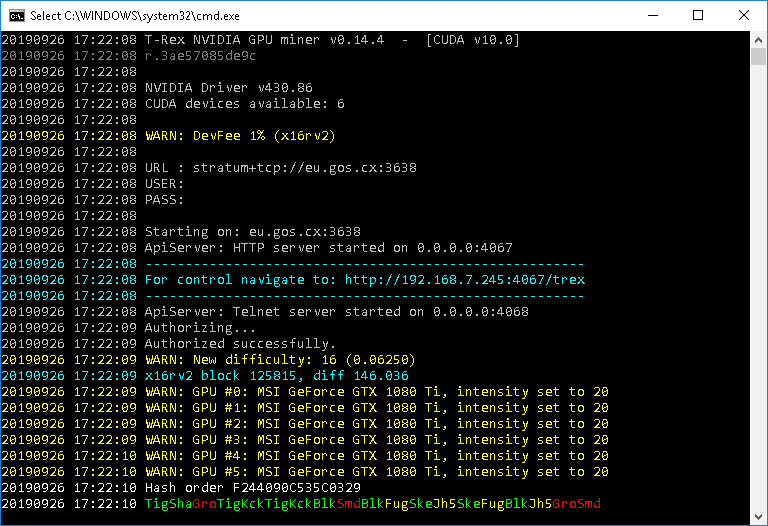
T-Rex miner works with a variety of algorithms — there are more than 30, including ethash, astralhash, dedal, honeycomb, kawpow, lyra2z, sha256q/t, x11r, etc. It was made to work with NVIDIA graphics cards and supports both Windows and Linux. The developer fee is 1%.
T-Rex miner has implemented various features over the years — for example, the ability to set up the GPU temperature color. Additionally, the T-Rex miner will continue to work even in case of a lost connection.
Best ETH Mining Hardware
| Name | Price | Hashing Power | Power Draw |
| AMD RX 580 | $300 | 32.74 MH/s | 84 W |
| NVIDIA GeForce RTX 3060 Ti | $400 | 60 MH/s | 120 W |
| NVIDIA Titan V | $2000 | 70 MH/s | 250 W |
| NVIDIA GeForce GTX 1070 | $750 | 26 MH/s | 200 W |
| NVIDIA GeForce GTX 1080 Ti | $820 | 43.5 MH/s | 220 W |
| NVIDIA GTX 1060 | $300 | 18 MH/s | 60 W |
| AMD Radeon RX 5700 XT | $1300 | 55 MH/s | 225 W |
| AMD Radeon RX 570 | $230 | 30 MH/s | 70 W |
| AMD Radeon R9 HD 7990 | $150 | 36 MH/s | 375 W |
| AMD Radeon RX Vega 64 | $599 | 50 MH/s | 150 W |
Side note: most of the prices listed in this table are the official ones, but due to supply shortages, some GPUs will only be sold by resellers at a higher price. This is especially true for newer, really popular graphics cards such as NVIDIA GeForce RTX 3060 Ti.
Ethereum mining hardware varies wildly in price, hashing power, and power consumption. Some GPUs have a high level of power efficiency, like AMD RX 580, while others are power-hungry and expensive to boot.
All of these rigs are more than suitable for mining Ethereum and making a profit, so you should choose one that would strike a balance between the resources you can spare and the power you need. Remember to take power consumption into account on par with the device’s initial price — especially if you live in one of the countries where the electricity fees are high.
Additionally, remember that in most cases, you will be able to resell the GPU in the future if you grow tired of Ethereum mining or if it becomes impossible to be carried out due to the switch from the PoW consensus algorithm to the PoS one. Alternatively, these GPUs can still be used to mine other cryptocurrencies, like Litecoin or Dogecoin.
What Settings Are “Safe” for 24/7 GPU Mining?
GPU mining can be very profitable, but at the same time, it can also be really hard on your mining rig. Mining consumes a lot of power and often causes one’s PC to overheat — that is why it is not recommended to mine on CPUs or laptops.
In order to avoid wasting all of your hard-earned profit on Ethereum mining hardware upgrades and repairs, you should take good care of your device. Increasing your rig’s longevity is essential if you want to profit from Ethereum mining.
There are even some tricks you can use to make your device more efficient at mining Ethereum, and most of them are absolutely free.
Temperatures and Fan Speeds
Be careful to prevent your computer’s temperature from rising above 50-60 degrees Celsius — it is not healthy for mining rigs to remain at temperatures above that for a long time. Remember, heat is the main enemy of any PC.
There are several ways to reach the optimum temperature. Firstly, if you run several GPUs, it would be a good idea to get a special mining case. These are usually rather open and allow you to mine crypto without creating a sauna in your PC case.
Secondly, do not neglect your fans. They play a huge role in cooling your mining rig and extending its lifecycle. It is not advised to run your fans at 100% speed, so you should make sure that your rig won’t require that to stay cool. Invest in better fans, get a few of them, and don’t forget to keep them in good shape.
Additionally, you should also consider placing a power limit on your GPU, limiting how much power your rig can use. While this may seem counter-intuitive, it helps to extend hardware’s life and makes the mining process a lot more sustainable and profitable in the long run.
Another thing to consider is the manufacturer that produced your GPU. Two graphics cards that have the same model can differ quite drastically depending on who made them — MSI or Defender, ASUS or Gigabyte, and so on. The more expensive GPUs are naturally more durable and are less likely to be faulty, while the cheaper ones can often have overheating issues.
GPUs and Memory Overclocking
Overclocking refers to the process of increasing clock and memory speeds beyond what was intended by the manufacturer. It can significantly increase your profits when mining cryptocurrency. Overclocking will increase the hash rate of your GPU, and it can also help to lower power consumption and, with it, electricity costs.
By balancing overclocking and power limits, one can increase the hash rate without raising (or even while lowering) power consumption.
FAQ
What is the best Ethereum miner?
All the miners we have listed in this article are great for mining ETH, and it’s hard to say which one’s the best Ethereum miner. While newer GPUs like the 3060 Ti will undoubtedly give you more mining power, they also cost a lot more.
Is it worth it to mine Ethereum?
Ethereum mining can still be profitable, especially if you have existing unused processing power. If you don’t want to commit too many resources but still would like to earn some ETH, you can join an Ethereum mining pool.
How long does it take to mine 1 Ethereum?
Ethereum’s block time (the time it takes to mine one block) is only 10 to 20 seconds, but due to high demand and thus increased complexity, it would normally take you 7.5 days to mine 1 ETH at the hashing power of 500MH/S.
When will Ethereum mining end?
The switch from proof-of-work to proof-of-stake keeps on being delayed, and there’s no saying when it actually comes. Currently, it is scheduled for the first half of 2022.

